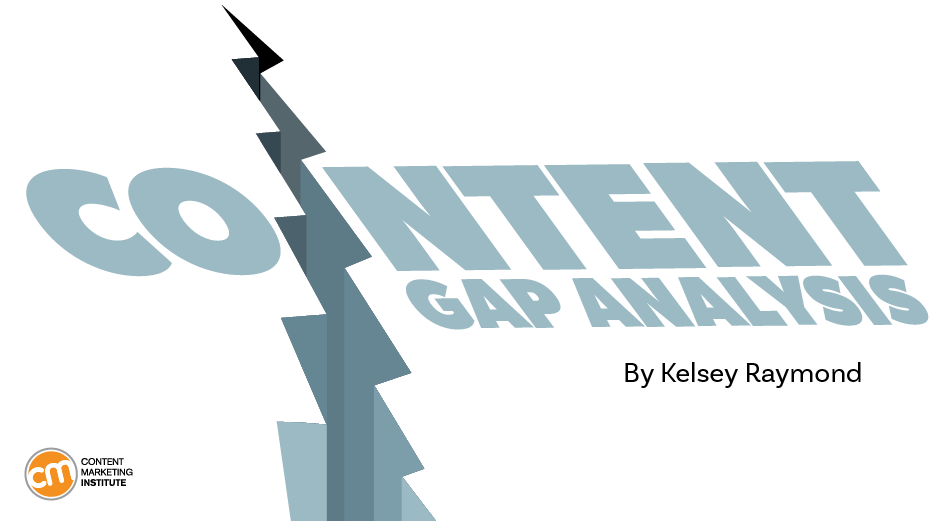MARKETING
How To Find Gaps in Your Content Strategy

Inside your content strategy lies holes that you can’t easily see.
These gaps may manifest themselves from the very beginning or materialize over time. But no matter their origin, these crevices present opportunities to improve your brand’s content marketing.
Target audiences and sales enablement are two common areas where gaps exist. If you’re not performing keyword research, conducting social listening, and generally keeping a pulse on what your target audience wants to learn, you could leave loads of opportunities on the table.
Among the marketers’ top two content marketing challenges identified in CMI research are creating content for the buyer’s journey and aligning content efforts across the sales and marketing teams, according to the same research. When marketers craft content to equip salespeople to share with prospects, they can help grow the company’s client base. But this can’t be done piecemeal.
Your #ContentStrategy has holes. It’s time to find them, says @Kelsey_M_Meyer via @CMIContent. Click To Tweet
So, how do you identify the gaps so you can address them and allow your content marketing to achieve its goals? It requires a four-step assessment.
How to perform a content gap analysis
Each step is designed to show what might be missing from your content marketing toolkit.
1. Perform a content audit
A content audit reveals what’s missing from your strategy and what your content competitors have that your brand doesn’t. That insight can inform future subjects for your blog, white papers, case studies, and other owned content.
To begin, inventory all the content on your website along with their essential metrics. You can put this together on a spreadsheet to compare and contrast the success of each asset. Don’t get caught up in flashy metrics. Instead, focus on the metrics that connect to your business goals, like page views, bounce rate, average visitor time on page, page-one keyword rankings, and backlinks. These metrics also reflect your audience’s reaction to your content.
Next, inventory your competitors’ content to identify what outranks your assets in search engine results for your targeted words. Track their strongest-performing content’s publicly available metrics, such as comments, shares, and backlinks, to identify topics you could reimagine in your content plan.
Inventory your competitors’ content to identify what outranks your assets. Reimagine these topics in your #content plan, says @Kelsey_M_Meyer via @CMIContent. Click To Tweet
2. Conduct keyword research and social listening
Keyword research can unearth a treasure trove of insight into what content your audience wants to know. Crack open a tool like Ahrefs or Moz’s Keyword Explorer to see what words people use to search for content related to your industry. Sift through these keywords to identify questions asked within your area of expertise that you can answer through new content assets.
See what your audience talks about on social media. Social listening tools like Sprout Social, HubSpot, and Hootsuite can help. You can analyze conversations, including mentions of your brand or industry, to learn more about your audience. You may identify new content opportunities by understanding how your audience feels about your brand, their needs and goals, and their most common challenges related to your industry and offerings.
3. Identify the failed marketing goals
Every content marketing strategy should have documented goals quantified within an achievable timeframe, such as 50 marketing-qualified leads per month. With your goals laid out, you can quickly review them and spot any goals you haven’t achieved. They indicate potential gaps that need to be closed.
For example, if you continually fall short of those 50 leads a month, look at your traffic numbers and conversion rates from individual assets or check page views for landing pages to identify how those numbers trend with your lead numbers. Or what percent of visitors who download an asset complete the call to action? Asking these bigger questions can help you highlight any anomalies in your strategy and reimagine a better flow.
4. Crowdsource your way to discovering what’s not there — and should be
While the first three steps in the content gap analysis look at past behavior, this step looks forward. Ask followers and subscribers what they’d like to know more about. Send a brief poll or survey by email or post to social to open your eyes to content themes your audience craves.
Survey your audience to see what #content themes they crave, says @Kelsey_M_Meyer via @CMIContent. Click To Tweet
You also can ask inside your company, given it is likely stacked with intelligent, talented people with a lot of experience. Ask them what they think is missing from your content or content marketing strategy. You can do it formally with a poll or survey or informally in face-to-face conversations. Among the questions to ask:
- Do our competitors share content on subjects you think we should cover?
- What industry-related new stories have you read that you would like to see our leaders talking about?
- Why do you think we’re missing [insert goal] repeatedly? What do you think could be done to help reach it more consistently?
This input can reveal content gaps you didn’t realize. If you’re lucky, it also can shower you with creative ideas.
Close the content gaps
Even the strongest marketing departments in the world have gaps in their content marketing strategies. However, they aren’t afraid to pinpoint and rectify those gaps, which gives them a competitive edge. If you want to join their ranks, you need to do the same. As a reward, you’ll be more likely to reap better returns on your content investments.
All tools mentioned in this article were suggested by the author. If you’d like to suggest a tool, share the article on social media with a comment.
HANDPICKED RELATED CONTENT:
Cover image by Joseph Kalinowski/Content Marketing Institute


















